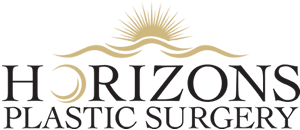Fractional laser resurfacing is often described as a game-changer in the world of skincare. If you’re looking to reduce wrinkles, smooth out scars, or improve uneven skin tone, then this treatment offers an effective, non-invasive option for skin rejuvenation. The magic lies in its ability to stimulate collagen production and revitalize your skin, leaving it smoother and firmer.
But how do you know if this treatment is right for you? Let’s explore the science behind fractional laser resurfacing, the conditions it treats, what to expect during recovery, and how to determine if you’re a good candidate. With insights from Dr. Marc Wetherington, a board-certified plastic surgeon in Rome, GA, we’ll guide you through everything you need to know to make an informed decision.
Understanding Fractional Laser Resurfacing
Fractional laser resurfacing is a non-ablative treatment that uses a fractional Erbium laser to deliver concentrated energy to the skin. Unlike traditional lasers, which affect the entire surface at once, fractional lasers target smaller, specific areas of the skin, leaving the surrounding areas untouched. This minimizes recovery time while achieving excellent results.
Why is this treatment so effective? The laser energy penetrates the skin deeply, triggering the production of new collagen, a protein that keeps the skin firm and youthful. Over time, this results in smoother skin with more even texture and tone.
“Combining fractional lasers with intense pulsed light technology allows us to amplify results significantly for patients seeking comprehensive skin rejuvenation,” says Dr. Wetherington.
Key Benefits
- Reduces fine lines and wrinkles
- Smooths acne and surgical scars
- Improves uneven skin tone
- Suited for all skin types
How Does Fractional Laser Resurfacing Work?
The fractional laser targets specific micro-areas of the skin, delivering 1540-nanometer energy pulses. Here’s a breakdown of the process:
- Preparation: Your skin is cleansed, and a numbing cream is applied to ensure comfort. This cream typically takes about 20 minutes to take effect.
- Treatment: The laser device delivers energy pulses to the skin, targeting areas of concern. The sensation is often described as feeling like rubber bands snapping against the skin.
- Collagen Stimulus: The laser energy stimulates fibroblasts in the skin to produce fresh collagen, which tightens and rejuvenates your skin over the following weeks.
“The flexibility of the Erbium laser allows us to treat targeted areas such as the forehead, crow’s feet, and mouth effectively, making it a versatile tool,” says Dr. Wetherington.
What Skin Conditions Does It Target?
Fractional laser resurfacing is an excellent option for addressing a variety of skin concerns, including:
- General aging: Diminish the appearance of fine lines and wrinkles.
- Acne scars: Smooth out indents caused by past breakouts.
- Surgical scars: Reduce the visibility of scars from past procedures.
- Uneven skin tone: Correct discoloration and pigmentation issues caused by sun damage or aging.
What’s even better? The treatment is safe for all skin types, offering a universal solution for anyone looking to enhance their complexion.
Am I a Good Candidate for Fractional Laser Resurfacing?
This treatment is ideal for individuals seeking non-invasive solutions to common skin problems, such as age-related wrinkles or scars from acne. Ask yourself these questions to help determine if it’s right for you:
- Do you have wrinkles or fine lines caused by sun exposure or aging?
- Are you dealing with scars, uneven skin tone, or texture issues?
- Are you looking for a treatment that’s safe for your skin type?
- Are you willing to set aside time for a short recovery?
If you answered yes, fractional laser resurfacing might be a perfect fit for your skincare goals.
A Step-by-Step Guide to the Treatment Process
Wondering what happens during your session? Here’s what you can expect:
- Before the Procedure: Your skin will be cleansed, and an anesthetic cream will be applied to minimize any discomfort.
- During the Procedure: You’ll wear protective goggles as the laser is applied in a controlled manner, targeting affected areas with pinpoint precision. While you may feel mild discomfort, the session typically lasts no longer than 30-45 minutes.
- After the Procedure: Expect some swelling and possible redness, which should subside within five to seven days. The healing process involves the regeneration of fresh, youthful skin.
Pro Tip from Dr. Wetherington: “Consistently applying a cooling aloe gel to the treated area minimizes discomfort and speeds up recovery.”
Recovery and Aftercare
The healing process is straightforward but requires care to maximize results:
- Swelling: Minor swelling is common and subsides within a week.
- Sun Protection: Avoid direct sunlight and wear SPF to protect your skin.
- Hydration: Use chilly aloe gel or a gentle moisturizer to soothe the skin.
- Treatments Frequency: Most clients undergo three treatments spaced four weeks apart for optimal results. Collagen production continues for months after the final session.
What Results Can You Expect?
Patience is key when it comes to fractional laser resurfacing. While your skin may initially appear red or slightly swollen, the long-term results are worth the wait. The new collagen provides structural support to the skin, making it tighter and more resilient. Over two to three months, wrinkles soften, scars fade, and your skin develops a radiant glow.
With just a few sessions, you’ll see why so many people turn to this treatment to help them feel confident in their skin again.
Take the First Step Toward Radiant Skin
Are you ready for smoother, firmer, and more youthful skin? Fractional laser resurfacing could be the skincare solution you’ve been searching for.
Schedule your complimentary consultation with Dr. Wetherington in Rome, GA, today and take the first step toward achieving your skincare goals.







